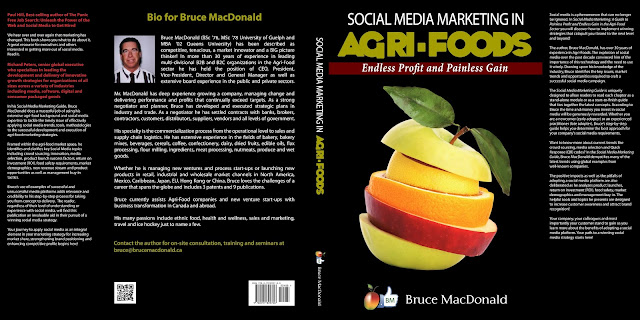THE HIGH COST OF SEAFOOD FRAUD
Posted in News, Market Research, Market Trends, Science & Research, Seafood, Fish, Label Claims,Labeling, Packaging, Restaurant, Food and Drug Administration (FDA), Regulatory, Food Safety,Foodservice, Economics, FONA International, Flavors, Flavor Supplier
WASHINGTON—Mislabeled seafood can cost consumers hundreds of dollars each year due to swapped species and fraud within restaurants or grocery stores, according to a new report released by Oceana.
Oceana found commonly swapped species of fish can cost up to twice as much as their cheaper counterparts, and previous research shows one-third of U.S. seafood tested between 2010 and 2012 was mislabeled, according to Food and Drug Administration (FDA) guidelines.
Incidences of food adulteration or “food fraud" has risen 60% since 2010. Seafood was among the nearly 800 new records of food fraud added to the USP Food Fraud Database, which tracks information about foods that are vulnerable to fraudulent manipulation in today’s food supply. Examples of seafood fraud documented in the database include sale of the fish escolar, often fraudulently mislabeled as white tuna or butterfish, and puffer fish, mislabeled as monkfish to evade import and other restrictions.
“Swapping a lower cost fish for a higher value one is like ordering a filet mignon and getting a hamburger instead," said report author and Oceana senior scientist Margot Stiles. “If a consumer eats mislabeled fish even just once a week, they could be losing up to hundreds of dollars each year due to seafood fraud."
Oceana interviewed experts working in the seafood industry to figure out what drives cost differences for different species, and it reviewed 300 menus from 12 different cities to help estimate retail prices. According to the report, a substitution of lower-cost species like tilapia for the more expensive grouper could cost consumers more than $10 for an 8 oz. fillet in a restaurant, and the common mislabeling of farmed Atlantic salmon for wild salmon can add an extra $5 to a customer’s bill.
In grocery stores, fillets of higher-cost fish are priced $4 more than cheaper substitutes. These price differences create a clear economic incentive for fraud.
Seafood follows a complex path from boat to plate, often crossing ocean basins and stopping in different countries before it makes it to the final point of sale. Each stop in the supply chain offers opportunity for fraud. Without traceability, or requiring information to follow the fish through the supply chain, consumers can be subject to fraud at any step of the way.
“Consumers deserve to know their seafood is safe, legally caught and honestly labeled, including information like where, when and how it was taken out of the ocean," Stiles said. "The more information that follows the fish, the harder it will be for fraudsters to rip off American consumers."
In March 2013, Congress introduced the Safety and Fraud Enforcement for Seafood (SAFE) Act, which would require traceability for all seafood sold in the U.S. and protect consumers from seafood fraud.
Incidences of food adulteration or “food fraud" has risen 60% since 2010. Seafood was among the nearly 800 new records of food fraud added to the USP Food Fraud Database, which tracks information about foods that are vulnerable to fraudulent manipulation in today’s food supply. Examples of seafood fraud documented in the database include sale of the fish escolar, often fraudulently mislabeled as white tuna or butterfish, and puffer fish, mislabeled as monkfish to evade import and other restrictions.
“Swapping a lower cost fish for a higher value one is like ordering a filet mignon and getting a hamburger instead," said report author and Oceana senior scientist Margot Stiles. “If a consumer eats mislabeled fish even just once a week, they could be losing up to hundreds of dollars each year due to seafood fraud."
Oceana interviewed experts working in the seafood industry to figure out what drives cost differences for different species, and it reviewed 300 menus from 12 different cities to help estimate retail prices. According to the report, a substitution of lower-cost species like tilapia for the more expensive grouper could cost consumers more than $10 for an 8 oz. fillet in a restaurant, and the common mislabeling of farmed Atlantic salmon for wild salmon can add an extra $5 to a customer’s bill.
In grocery stores, fillets of higher-cost fish are priced $4 more than cheaper substitutes. These price differences create a clear economic incentive for fraud.
Seafood follows a complex path from boat to plate, often crossing ocean basins and stopping in different countries before it makes it to the final point of sale. Each stop in the supply chain offers opportunity for fraud. Without traceability, or requiring information to follow the fish through the supply chain, consumers can be subject to fraud at any step of the way.
“Consumers deserve to know their seafood is safe, legally caught and honestly labeled, including information like where, when and how it was taken out of the ocean," Stiles said. "The more information that follows the fish, the harder it will be for fraudsters to rip off American consumers."
In March 2013, Congress introduced the Safety and Fraud Enforcement for Seafood (SAFE) Act, which would require traceability for all seafood sold in the U.S. and protect consumers from seafood fraud.
Sources:
Check out my latest e-book entitled: "Social Media Marketing in Agri-Foods: Endless Profit and Painless Gain"
The book is available on Amazon and Kindle for $4.99 USD. Visit amazon/Kindle to order now:
http://www.amazon.ca/Social-Media-Marketing-Agri-Foods-ebook/dp/B00C42OB3E/ref=sr_1_1?s=digital-text&ie=UTF8&qid=1364756966&sr=1-1
Thanks for taking the time!


No comments:
Post a Comment